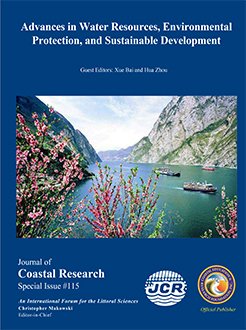Pan, Z.H.; Li, B.H.; Yang, J.; Zhang, D.S.; Yang, Y., and Zhang, S.W., 2020. Study on the spatial and temporal distribution and risk assessment of PAHs between river and groundwater - Take the typical section of Beijing north canal as an example. In: Bai, X. and Zhou, H. (eds.), Advances in Water Resources, Environmental Protection, and Sustainable Development. Journal of Coastal Research, Special Issue No. 115, pp. 361-366. Coconut Creek (Florida), ISSN 0749-0208.
Understanding the interaction of polycyclic aromatic hydrocarbons (PAHs) in river and groundwater is of great significance to the prevention and control of their pollution and to the protection of water resources. In order to study the interaction of PAHs in rivers and groundwater of different aquifers in Beiyun River Basin, here water samples were collected from rivers and groundwater in different periods, and the composition, content, temporal and spatial distribution characteristics of PAHs in rivers and groundwater were analyzed by correlation and difference analysis method. In addition, risk assessment was done by using risk entropy method. The results showed that the detection rate of 16 kinds of PAHs were about 100%, except benzo [a] pyrene and dibenzo [a, H] anthracene. Naphthalene was the main component, which was 1587.42ng/l, accounting for 85.6% of the total amount. In spring, the concentrations of PAHs were significantly lower than those in summer, and the concentration of 2-3-PAHs was higher than that of 4-PAHs. In general, the concentration of PAHs in the phreatic aquifer of the downstream reaches in the Beiyun River was higher than that in the upper reaches. According to the risk assessment data, the ecological risk of the study area was relatively low in different seasons and geographical conditions.





